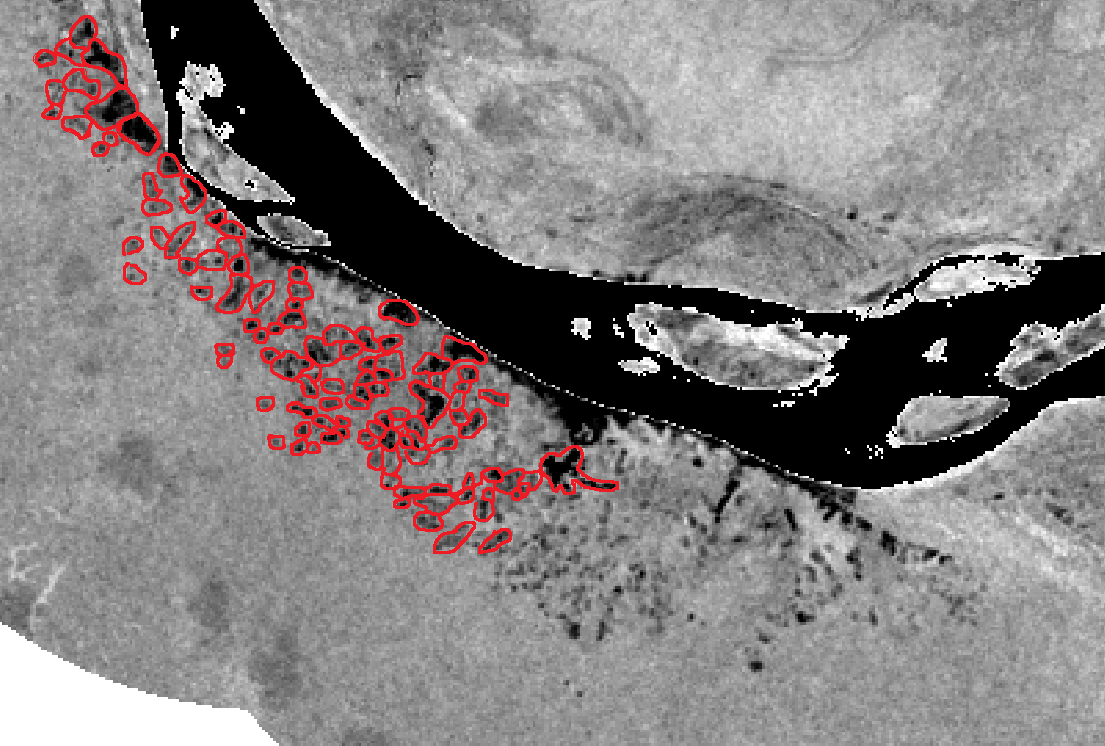Hey Yannick,
Thanks for your quick reply.
I am interested in segmenting agricultural fields based upon their spectral similarity through time.
I am currently using a single band, which is an average of NDMI calculated in 10 different years.
NDMIstackaverage_subset.tif (769.6 KB)
Would you recommend using a 10 band image with each band being the NDMI calculated each of those 10 years instead?
From the attached subset, it would be great to have segments of fields that look like this:
Thanks!
